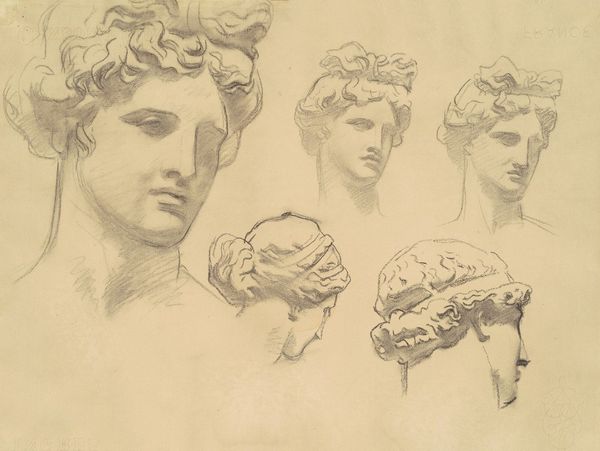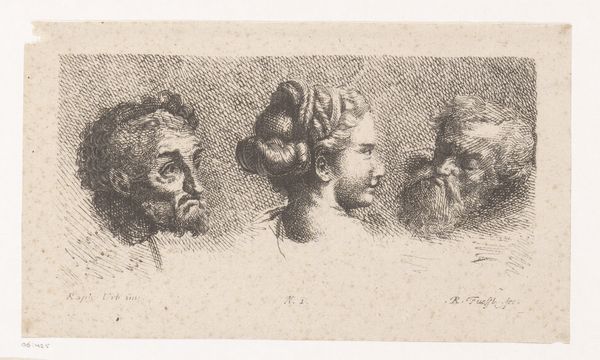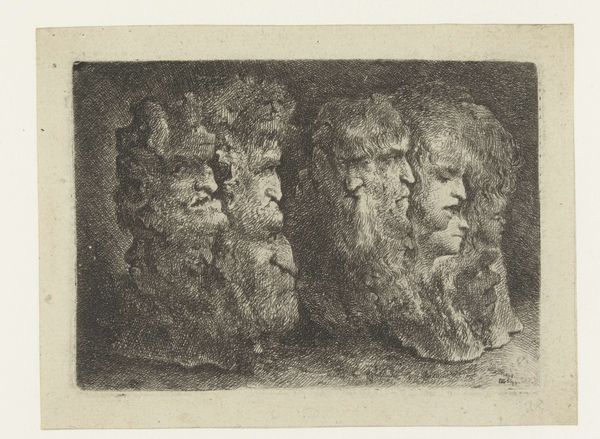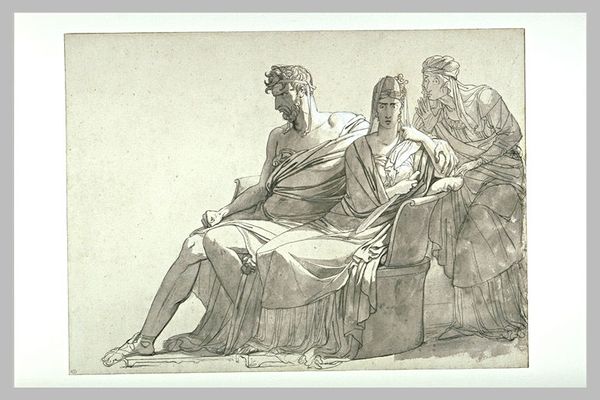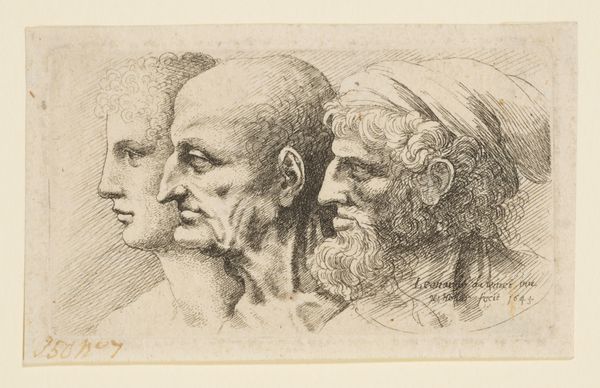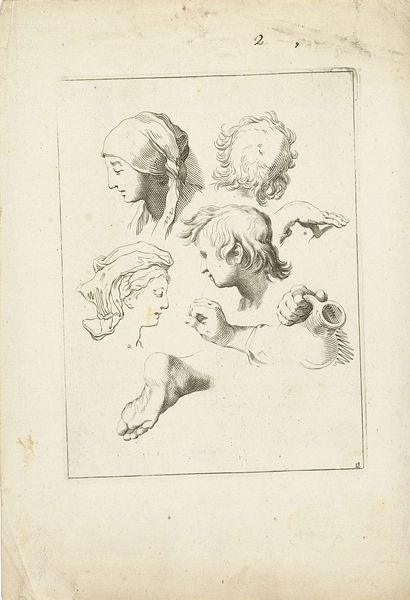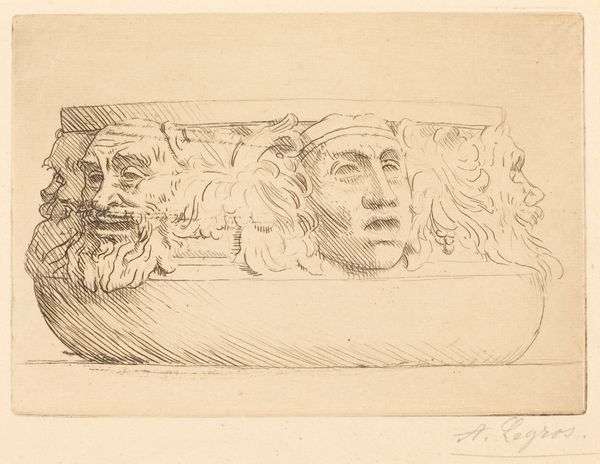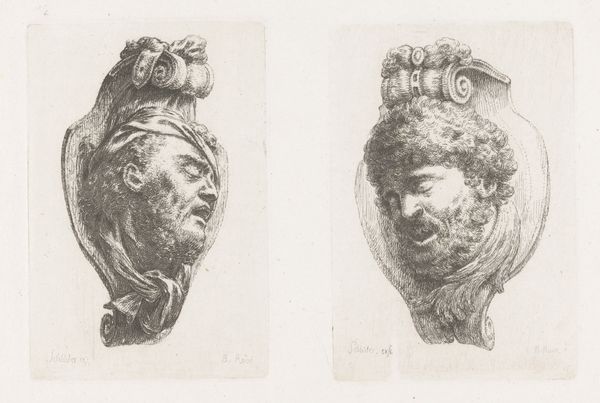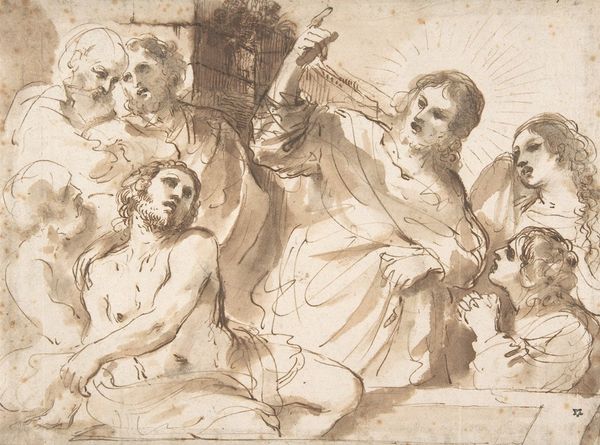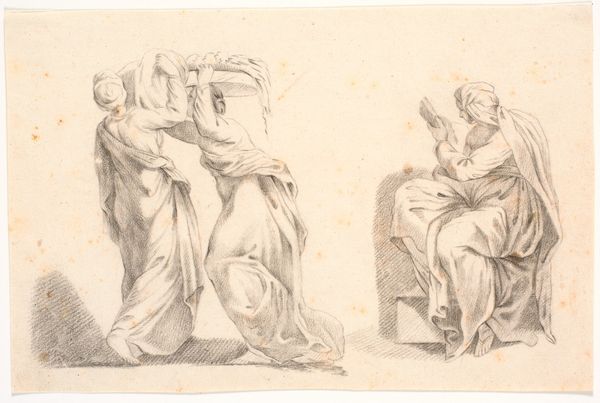
drawing, paper, ink
#
portrait
#
drawing
#
baroque
#
charcoal drawing
#
paper
#
ink
#
portrait drawing
#
genre-painting
#
history-painting
Dimensions: height 116 mm, width 191 mm
Copyright: Rijks Museum: Open Domain
Curator: Here we have a drawing from between 1648 and 1671, by Jan de Bisschop. It’s called “Four Heads of Men, Facing Right.” The piece uses ink and charcoal on paper and resides here at the Rijksmuseum. Editor: The initial impact is striking, the sepia tones give the figures a ghostly, antique quality. They seem suspended in time, emerging from a long-lost frieze. Curator: Indeed, de Bisschop, deeply influenced by classical antiquity, often reproduced ancient sculptures and reliefs in his drawings. It was part of a broader movement. Seventeenth-century artists sought to revive classical ideals during the Baroque era. De Bisschop was a central figure. Editor: I'm drawn to how each face presents a slightly different archetype. The beards, the hairstyles, the expressions – they seem to tap into very specific, enduring concepts of masculinity. There's authority, perhaps even wisdom, emanating from those sculpted features. Curator: Well, these kinds of drawings had a pedagogical function too. Think about it this way. Access to antiquities was limited. De Bisschop's work circulated, acting as models for other artists. His collection of prints, the Signorum Veterum Icones, became massively influential. The imagery contributed to the artistic climate of the time, circulating particular ideas about history. Editor: Absolutely, and within that circulation, these images take on new symbolic life. I see echoes of power dynamics, both ancient and contemporary to de Bisschop. Perhaps this piece provided commentary on leadership during that period. Even the choice to use drawing, with its directness, almost like an intimate sketch, feels deliberate. Curator: His technique, with its washes of ink and charcoal to achieve that sculptural effect, also allowed him to represent classical sculpture, even its imperfections, which resonated with the naturalistic elements within Baroque art. Editor: Looking closely, there's a definite melancholic atmosphere, possibly brought on by our own modern awareness of what happens to empires. Still, de Bisschop's study preserves them and asks that we reconsider the symbolic narratives around masculinity and leadership. Curator: Precisely. He offered a portal into the past. This in turn influenced the trajectory of art production for a broad circle of artists. Editor: These heads, seemingly frozen in a moment, encourage reflection, don’t they? What did those forms communicate in the seventeenth century, and how do they persist and resonate today?
Comments
No comments
Be the first to comment and join the conversation on the ultimate creative platform.
